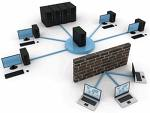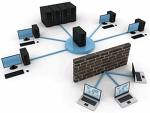 When looking at their IT network backup most companies focus on the critical data that they need to recover in the event of a failure. This data includes databases, e-mail records and perhaps office documents such as correspondence. Traditional backup software focuses on this type of protection. This is fine as far as it goes. in our practice in Hamilton we find clients are looking for more.
When looking at their IT network backup most companies focus on the critical data that they need to recover in the event of a failure. This data includes databases, e-mail records and perhaps office documents such as correspondence. Traditional backup software focuses on this type of protection. This is fine as far as it goes. in our practice in Hamilton we find clients are looking for more.
What are the biggest impacts of server failure caused by hardware or software problems?
Along with the loss of productivity while the system is recovered the biggest cost is the rebuilding of the server. If the failure is serious this can take many hours assuming all of the needed tools, both software and hardware are readily at hand. If this has ever happened to you, you know the frustration it causes is substantial.
Some ways most of the disruption can be avoided.
- Build in hardware redundancy. Use a RAID hard drive structure so that if one drive fails the data has been spread over the balance of the RAID to keep things going.
- When you buy your server buy one or more extra hard drives. This approach ensures that you have a compatible hard drive at hand in the event of a drive failure and you will be back in full function within minutes once the drive is swapped into the server. Also make sure your server has server quality drives designed for 24/7 operation to help reduce the potential of failure in the first place. This is a place where a few more dollars up front will pay dividends.
- For backup software use a server snapshot package that provides granular recovery capability. These more specialized packages will cost about the same as conventional backup software but give you much more bang for the buck. Not everyone knows how to use these products so check with your support to ensure they understand these tools. With this software you can get a daily capture of all of the setup of your server, operating system, data and installed software. In the event of a failure which is not easily recovered, e.g. a mother board failure, you can load the image which has been stored onto another computer and keep your operation running. Depending upon the size of the system this can be done in a few minutes or a couple of hours at most and you are ready to keep working while the repair is made. Once the server is ready you do another image and reload the repaired or replaced server. This is a much safer and faster method than a manual rebuild.
- Use disc backup instead of tape. At one time all server backup was directed to tape systems. They were complex, frequently failed and the media was costly. You can now use portable hard drives with large storage capacity to take your backup offsite. Be disciplined to do this each day.
- Consider offsite remote backup for critical data. This solution provides even more potential for redundancy and when combined with a portable drive for your images you can be sure your data is secure. With an automated process all of your most important data is secured offsite into a data centre as frequently as you desire. It is a low cost extra insurance.
When configuring your It network backup it is possible to provide a very high degree of security and improve your recovery process. It takes some design effort and a thoughtful view of what data and what systems are most critical to the survival of your business.
Backup is not just for disaster recovery. It can also be about recovering the inadvertent deletion of an e-mail record or a folder from a hard drive or other inconvenience issue. Having the right system in place makes this possible if acted upon in a timely manner.
How is your backup setup? Do you test it regularly to ensure you have the data you need? Can you recover a server in less than 1/2 a day?
Lee K



